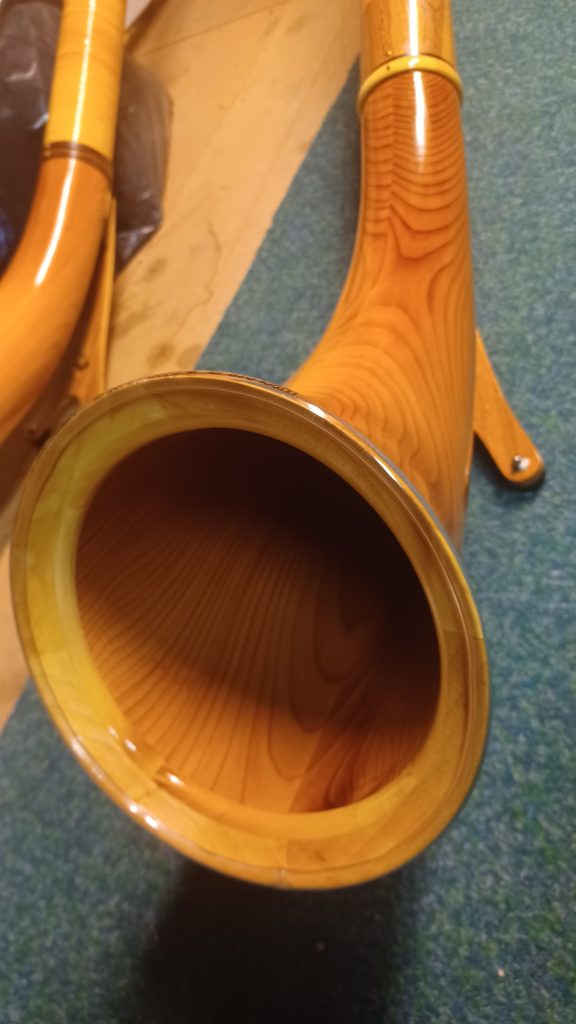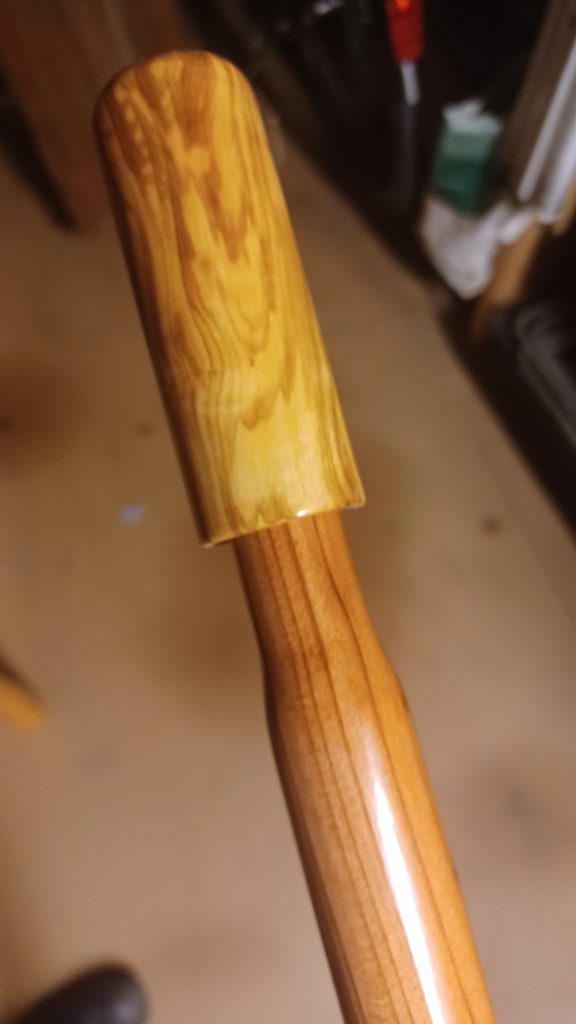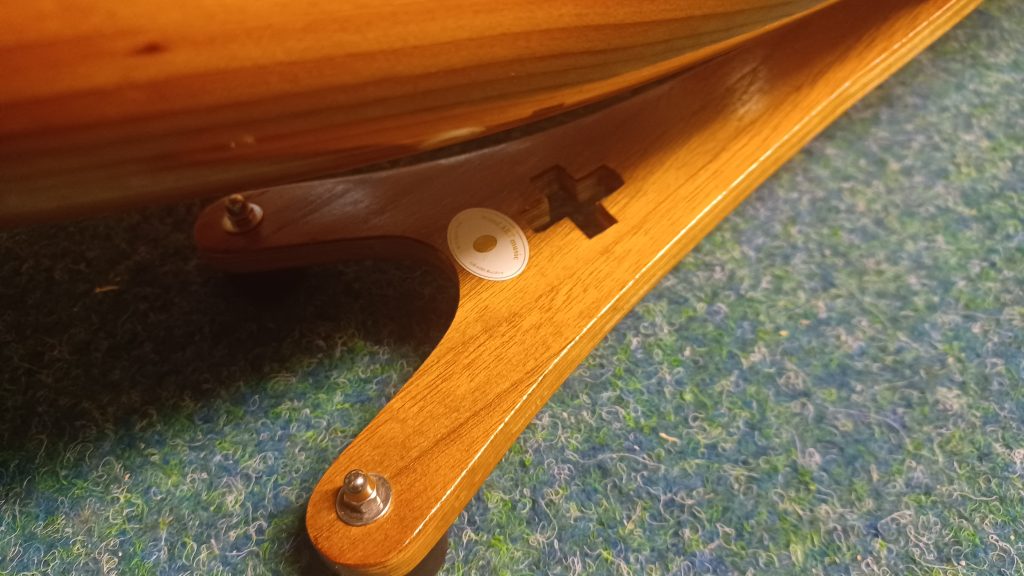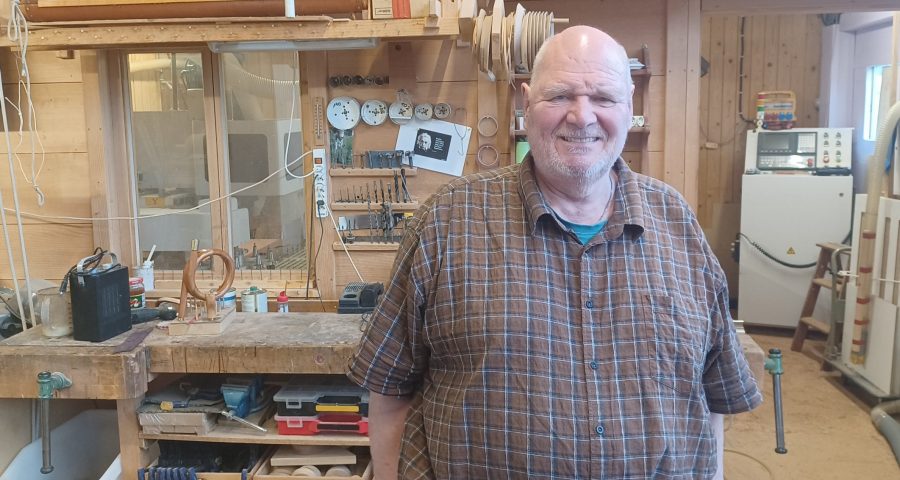Anton “Toni” von Gunten began his musical career in early childhood. From the violin he moved on to the clarinet and brass band. He graduated in wind band conducting, later working as a clarinet and saxophone teacher. Besides, he always dealt with wood; he built original“urchrummi” furniture during several years. He owes his entry into the alphorn to the reputation of alphorn maker Tobias Bärtschi, whom he had known since recruit school in the army band – the brass band of the Swiss army. At the time, Bärtschi was looking for someone to build Büchel for him. Although Toni was soon to start his own business, the relationship between the two alphorn farmers continues to this day: they buy wood together, share a CNC machine and support each other.
In alphorn making, Toni consistently follows his own path. As a professing Original Christian, he is convinced that the numerous ideas are ultimately a divine gift. He also describes his approach as a “path of gentleness”: listening within, following intuition, and treating materials so that they vibrate naturally and freely. This is how extraordinary, but in itself very coherent instruments were created.
Visually, the woodARTmusic alphorns make a filigree impression. This is mainly due to the very narrow bore. Only at the very end does the tube widen to form a cup with a diameter of 20cm. To the scale, a dead weight of only 1.6-1.8kg. The reason for this is the wall thickness of 6mm. Toni emphasizes that this is only possible thanks to the cork joints. Unlike aluminum bushings, no damping foreign material interrupts the vibrations in this design; only a fine ring of black carbon fiber protects the plug-in connections from breakage. The swinging behavior is also served by the special design of the foot. The alphorn thus plays itself “on clouds”. As a positive side effect, the swinging foot prevents the transmission of vibrations from the stage to the mouthpiece. Another visible distinguishing feature is the tuning slide, which has been accepted by the Federal Yodeling Association and copied in some places. All these details, as well as the five-part design, mean a very high level of manufacturing effort. Although the cups and tubes are milled on CNC, Toni puts an additional 90 hours of handwork into each horn.
Toni builds wound and unwound alphorns. In addition to spruce, he relies on cedar. He took the idea from violin making; thin-walled cedar is also used in high-quality guitars. Cedar is about 4 times more expensive than mountain spruce, but its acoustic properties are considered particularly noble. I did not notice a subtle cedar smell on the instruments that were oiled inside and out. (Clarification for botanists: Toni uses wood from the sequoia tree grown in Zurich. This belongs to the cypress family, while the true cedar is classified in the pine family. However, in woodworking, the term cedar is commonly used to refer to pine trees – especially prominent in Western Red Cedar).





Toni had me blow into four different alphorns in his workshop in Reiden: (1) a coiled horn in spruce, (2) a coiled spruce horn with cup in cedar – he calls this a “hybrid”, (3) a coiled cedar horn, and (4) an uncoiled cedar horn. The horns were built at different times and thus also illustrated the evolution in design and workmanship. Toni has mainly changed the position of the sockets. I was not able to separate the improved design and the different material from the overall result. However, the result is impressive: sound and response improve perceptibly from (1) to (4). While the oldest spruce horn (1, moreover a “B stick”) still sounds a bit reedy-nasal, the sound of the newest cedar horn widens to a beautiful sound that I would not have given to a horn with so little mass. When analyzing the recordings at home, I particularly noticed the clearer harmonics in the 300-1’000Hz range; they are obviously the result of the improved vibration behavior. In terms of intonation, the four horns are very good over the entire range.
I found playing on the woodARTmusic alphorns took a bit of getting used to at first. This feather-light, movable “innerschwizer Hörnli” feels quite different from a solid horn on a rigid base. You also notice the narrow bore and have to adjust the airflow for a clean sound. After a few minutes, however, the qualities open up. I especially liked the smoothness, which almost reminded me of a Büchel. Advanced wind players with good control can play this instrument in a decidedly virtuosic and dynamic manner.
Toni’s alphorns are not cheap. He does not recommend his entry-level “Student” model (from 3,335 CHF) himself because many of the ideas mentioned above are not realized in it. A spruce horn “Master” in F# (analogous to 1 above) made according to an improved design costs 4’950 CHF, the top model “Elite” in unwound cedar (4) 5’950 CHF. In addition, depending on your wishes, there are additional tubes with which tunings in F, G, A-flat, A, B and C are possible. This clearly positions woodARTmusic in a narrow niche. Toni sells a small number of alphorns each year, typically to advanced alphorn players or professionals. On his website you can find more information and numerous photos. Below are a few more impressions from my visit in January 2023.
Conclusion: Many original and coherent ideas make this filigree lightweight an impressive sounding lover’s alphorn.

Leave a Reply